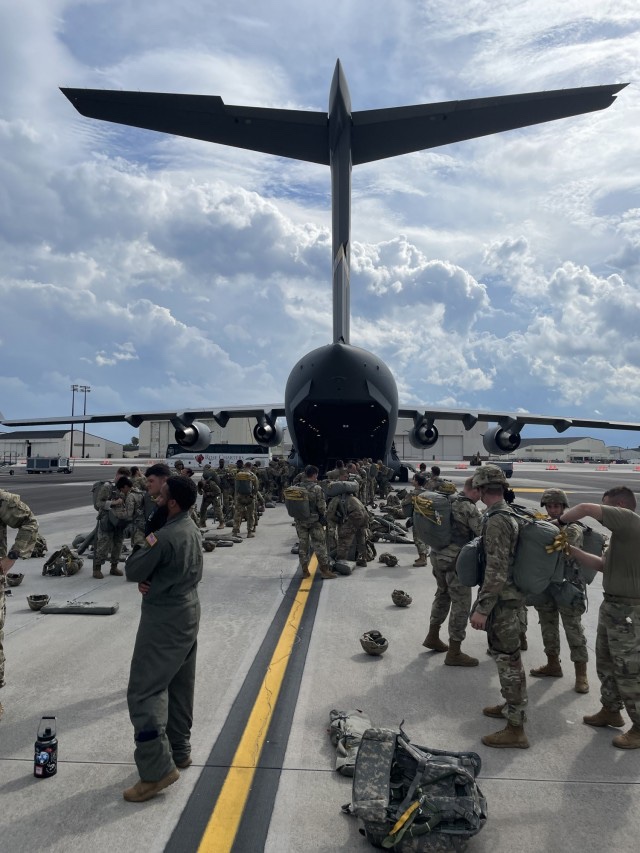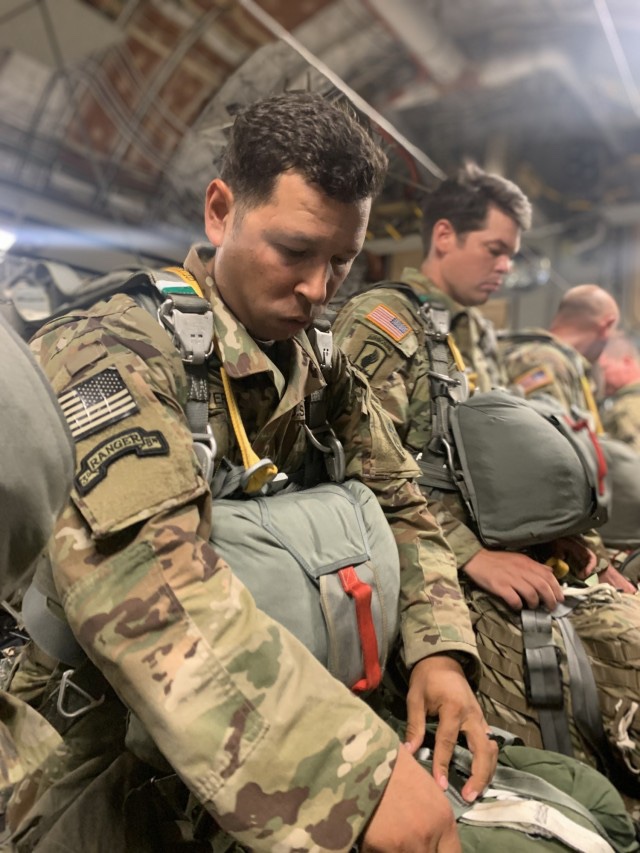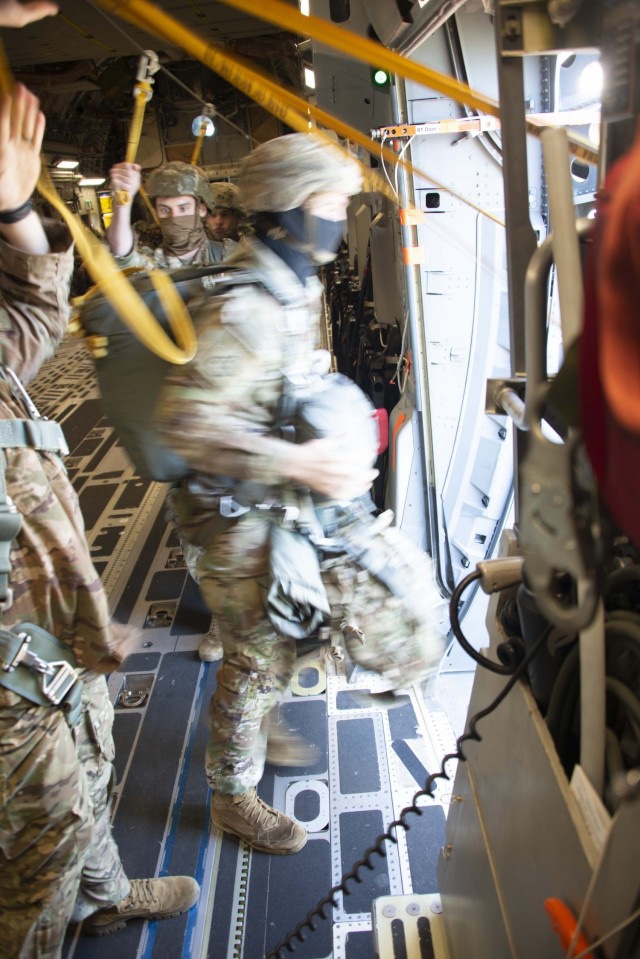
FORT BRAGG, North Carolina – Airborne Soldiers here recently tested combat helmet sensors looking to help the Army lessen repetitive traumatic injuries to the head and neck while jumping from aircraft.
The 2nd Brigade, 82nd Airborne Division and the Airborne and Special Operations Test Directorate teamed up to do testing for the Army Research Laboratory’s (ARL) newest Head Impact Monitoring Sensors.
Ongoing research supported by the ARL over the last 10 years has developed improved monitoring devices and the implementation of many new protective gear developments.
“Ultimately our goal for the Rate Activated Tether (RAT) helmet suspension is to increase the blunt impact protection in all combat helmets for all Soldiers,” said Thomas Plaisted, the ARL Materials Engineer Research Lead.
He said whether Airborne or ground-based operations Soldiers, the goal is to achieve a comfortable and stable helmet fit with minimal added weight.

“The Impact Monitoring Mouthguard (IMM) is a ‘Check Engine’ sensor that provides understandable and objective head impact and blunt force data to line leaders regarding the readiness of their Service members,” said Dr. Adam Bartsch, Chief Science Officer for Prevent Biometrics.
For the past year, the IMM Team has been collaborating with the ARL to evaluate the RAT impact absorption system fitted into the Army Combat Helmet.
Testing of the IMM and RAT began mid-July with a day of ground training and familiarization, followed by combat-equipped jumps on Fort Bragg’s Holland Drop Zone.
“The findings from this test are vital in understanding the physical demands Soldiers encounter while conducting airborne operations,” said Capt. Tyler Miller, ABNSOTD Operations Officer.
“With this data, leaders and researchers can develop equipment and processes to better protect paratroopers.”

Ground training consisted of experts from ARL and Prevent Biometrics conducting training on proper wear and fitting of the RAT and IMM.
The test jumpers then tested the equipment on the ground with Sustained Airborne Training, Parachute Landing Falls on various surfaces, and then practicing jump commands and aircraft exits out of a mock door trainer.
That was followed by combat-equipped training jumps on Fort Bragg’s Holland Drop Zone from U.S. Air Force C-17 Aircraft, along with Paratroopers from 2nd Brigade, 82nd Airborne Division, who were already jumping for training for mass tactical airfield seizure insertions.
“The ability to test and put these new and emerging technologies directly into the hands of our Soldiers goes far too rapidly evolve technology for the future of the Army,” said Miller.
Data collected from post jump surveys and the head impact sensors will lead to further development of protective equipment for Paratroopers.
Soldiers from the 2nd Brigade, 82nd Airborne Division plan to assist medical researchers, by utilizing the IMM for further head impact data collection during training events over the coming months.
The data these Soldiers will gather will assist researchers in further development of protective equipment and techniques to prevent future mild traumatic brain injuries from combat and everyday training events.
By CPT Christopher Weber, Airborne and Special Operations Test Directorate, U.S. Army Operational Test Command

